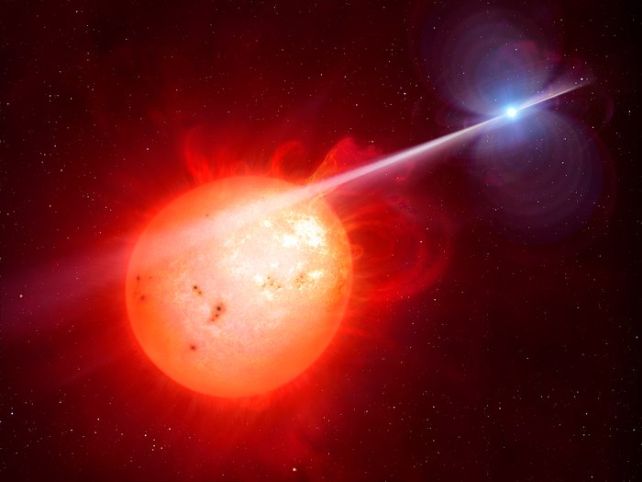A newly discovered star just 773 light-years away belongs to one of the rarest categories in the Milky Way. J1912-4410 is a white dwarf pulsar, a type of star so rarely seen that only one other is known in the entire galaxy. Its discovery confirms that these stars exist in a class of their own, and it gives us a new tool for interpreting not just the evolution of stars but also the strange signals detected throughout the Milky Way that defy conventional explanation.

Unraveling the Mystery of White Dwarf Pulsars:
Traditionally, pulsars are a type of dead star called neutron stars. They are remnants of massive stars that have run out of hydrogen fuel in their cores. In the case of a pulsar, the neutron star spins rapidly, while beams of electromagnetic radiation erupt from the magnetic poles, causing the star to appear to pulse. White dwarfs, on the other hand, are the collapsed cores of dead stars below around 8 solar masses. Until a few years ago, it was believed that white dwarfs do not turn into pulsars.
The First White Dwarf Pulsar:
In 2016, astronomers discovered the first white dwarf pulsar named AR Scorpii. Unlike traditional pulsars, AR Scorpii is a white dwarf in a binary system with a red dwarf star. As it spins, its beams sweep past the red dwarf, causing it to brighten across multiple wavelengths on regular time frames. This discovery challenged the existing understanding of white dwarfs, as AR Scorpii exhibited characteristics usually achieved through mass transfer from the red dwarf.
The Dynamo Model: Explaining Magnetic Fields in White Dwarfs:
The magnetic fields in white dwarfs can be more than a million times stronger than the magnetic field of the Sun. The origin of these magnetic fields has been a mystery in the field of astronomy. The discovery of J1912-4410, the newly found white dwarf pulsar, provided a critical step forward in understanding these magnetic fields. It seems that the magnetic field of a white dwarf is generated by an internal dynamo, similar to Earth’s liquid core generating its magnetic field but on a much more powerful scale.
Expanding the Sample Size:
With the discovery of J1912-4410, scientists now have another white dwarf pulsar to study. Researchers combed survey data to find stars with similar characteristics to AR Scorpii, and the follow-up investigation confirmed the existence of more white dwarf pulsars. This expanded sample size will allow scientists to gain a deeper understanding of these rare stars and their properties.
Implications and Further Discoveries:
The discovery of white dwarf pulsars has significant implications for our understanding of the Milky Way galaxy. These stars can help explain the strange signals detected throughout the galaxy that defy conventional explanation. Additionally, they provide insight into the internal dynamics of white dwarfs and their evolution. The newfound knowledge can aid in resolving ongoing mysteries and help interpret other enigmatic phenomena within the Milky Way.
Conclusion:
The discovery of J1912-4410, a white dwarf pulsar, is a significant milestone in the field of astronomy. This rare star adds to our knowledge of these enigmatic objects and confirms their existence as a distinct class in the Milky Way. The presence of white dwarf pulsars opens up new avenues for research and sheds light on the evolution of stars and the mysterious signals detected throughout our galaxy. As scientists continue to study and explore these fascinating objects, we can expect further insights into the nature of the universe we inhabit.
